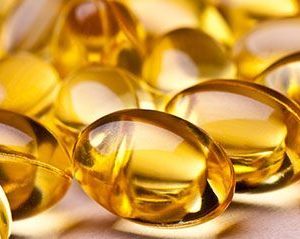- Navigating Your Midlife Crisis: Embracing New Possibilities
- City Raccoons Showing Signs of Domestication
- Mapping the Exposome: Science Broadens Focus to Environmental Disease Triggers
- One Week Less on Social Media Linked to Better Mental Health
- Your Brain Changes in Stages as You Age, Study Finds
- Some Suicide Victims Show No Typical Warning Signs, Study Finds
- ByHeart Formula Faces Lawsuits After Babies Sickened With Botulism
- Switch to Vegan Diet Could Cut Your Greenhouse Gas Emissions in Half
- Regular Bedtime Does Wonders for Blood Pressure
- Dining Alone Could Mean Worse Nutrition for Seniors
High Vitamin D Levels May Help Prevent COVID-19, Especially in Black Patients

Vitamin D — better known as the “sunshine vitamin” — might protect you from COVID-19, a new study suggests.
Researchers said that the protection is particularly potent among Black people.
While vitamin D levels of 30 nanograms per milliliter (ng/ml) or more are typically considered sufficient, Black people who had levels of 30 to 40 ng/ml had nearly triple the odds of testing positive for COVID-19 compared to people with levels of 40 ng/ml or more. The level of vitamin D in the body is measured by a blood test.
“These new results tell us that having vitamin D levels above those normally considered sufficient is associated with decreased risk of testing positive for COVID-19, at least in Black individuals,” said lead author Dr. David Meltzer, chief of hospital medicine at University of Chicago Medicine.
Statistically significant links between vitamin D levels and COVID risk were not found in white people.
For the study, the researchers collected data on more than 3,000 patients whose vitamin D levels were tested within 14 days before a COVID test.
The study found people with a vitamin D deficiency had 7.2% chance of testing positive for the virus. In another recent study, more than 80% of COVID-positive patients were found to be vitamin D deficient.
“This supports arguments for designing clinical trials that can test whether or not vitamin D may be a viable intervention to lower the risk of the disease, especially in persons of color,” Meltzer said in a university news release.
He noted that most of the literature on vitamin D is focused on bone health, which is where the current standards for sufficient vitamin levels come from.
“But there’s also some evidence that vitamin D might improve immune function and decrease inflammation,” Meltzer said.
While the data so far have been inconclusive, he said earlier studies may have led to recommended doses that were too low to do much for the immune system, even if they were sufficient for bone health.
“It may be that different levels of vitamin D are adequate for different functions,” Meltzer said.
Vitamin D is obtained from supplements, from oily fish, red meat, liver and fortified foods. The body also produces it in response to exposure of skin to sunlight, leading to its nickname.
Meltzer noted that most people, especially those with darker skin, have lower levels of the vitamin. About half of the world’s population has levels below the 30 ng/ml considered sufficient.
“Lifeguards, surfers, those are the kinds of folks who tend to have more than sufficient vitamin D levels,” Meltzer said. “Most folks living in Chicago in the winter are going to have levels that are well below that.”
The daily recommended allowance of vitamin D for adults is 600 to 800 international units (IUs). The National Academy of Medicine has said taking up to 4,000 IUs per day is safe for the vast majority of people.
It is hard to determine exactly how vitamin D supports the immune system.
While the new study shows a link between vitamin D levels and the risk of testing positive for COVID, researchers don’t know why that is or whether the results are due to vitamin D directly or other related biological factors, Meltzer said.
The findings were published online March 19 in the journal JAMA Network Open.
More information
For more on vitamin D, visit the U.S. National Institutes of Health.
SOURCE: University of Chicago Medicine, news release, March 19, 2021
Source: HealthDay
Copyright © 2025 HealthDay. All rights reserved.










